What to paint the bath?
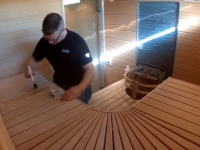
Whenever it comes to painting a bathhouse, you should distinguish between products that can be used to paint it outside and those intended for interior finishing. In order to give the most complete picture of all the options presented, we decided to consider both issues separately.
Coatings for painting the inside
If you like the texture of natural wood, it's best to use water-based paints to paint the inside of bathing rooms. When it comes to walls, you can take any compound that fits your budget. However, when applying the finish, you should consider protection against bacteria, fungus, mold, and also against fire. That is why, choosing a paint, you should always look whether it includes a fungicidal component, which kills pathogenic microflora.
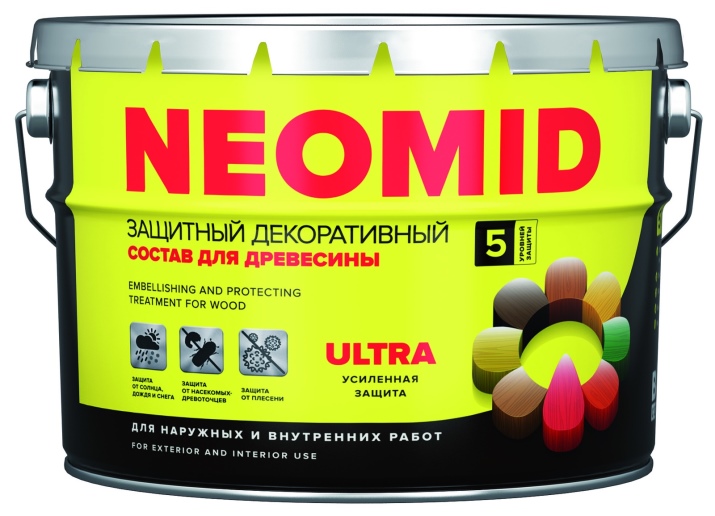
If the paint material already contains all the necessary components that increase the safety of the room, then the use of specialized drugs is not required. But if they are not in the composition, then after painting it will be necessary to impregnate the surface with natural oil, as well as wax, oil wax.
It is noteworthy that such impregnations can be tinted, so with the choice of shade range will not be difficult.
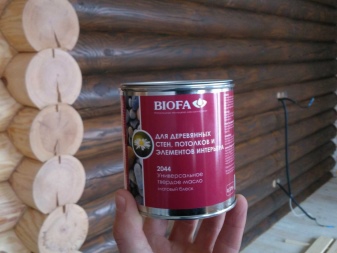
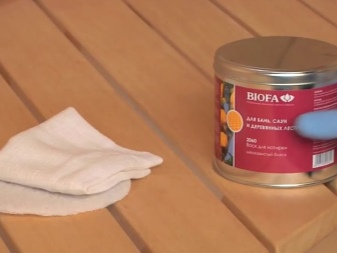
If the bath is erected from logs, logs or beams, you will have to try to ensure that over time, the wood is not cracked and was not defeated by fungi. To do this, all rooms except the steam room, after staining should be treated with antiseptic and, if possible, fire retardant.
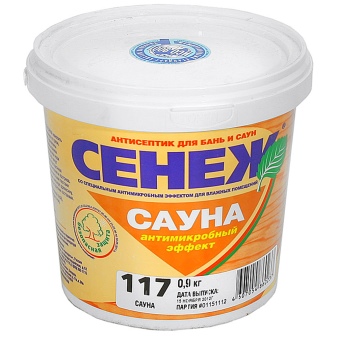
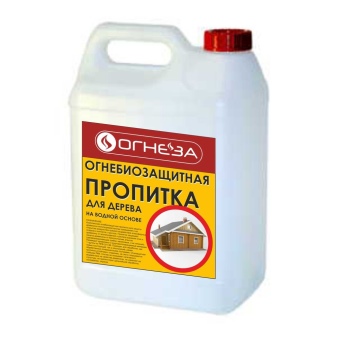
It is very important to use different coatings depending on the functionality of the rooms in the bath. For example, in dry spaces you can apply any paint you like, while in the washing room only those that are designed specifically for bathrooms (a good choice for them will be yacht varnish).
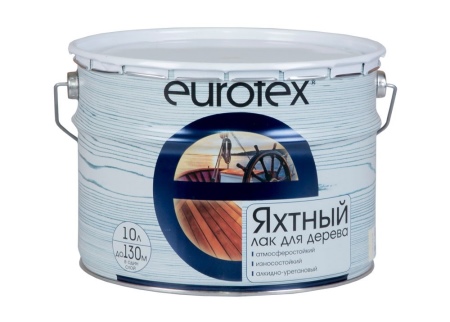
In a hot steam room is allowed to use only those lines of products that are specifically for her and created.
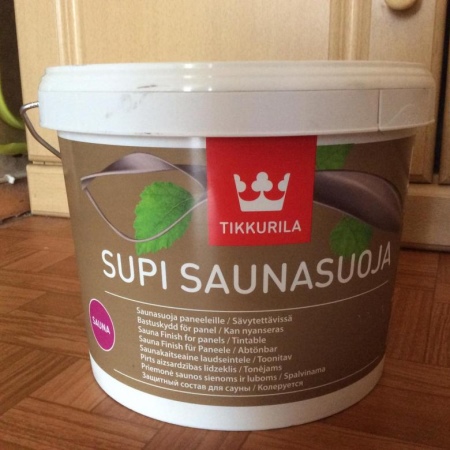
If the walls in the sauna are made of brick, then it is quite difficult to imagine such a room without finishing. The only exception is probably the partition wall that leads the stove into the adjoining room. This partition wall does not need to be finished, especially the part that faces the steam room.
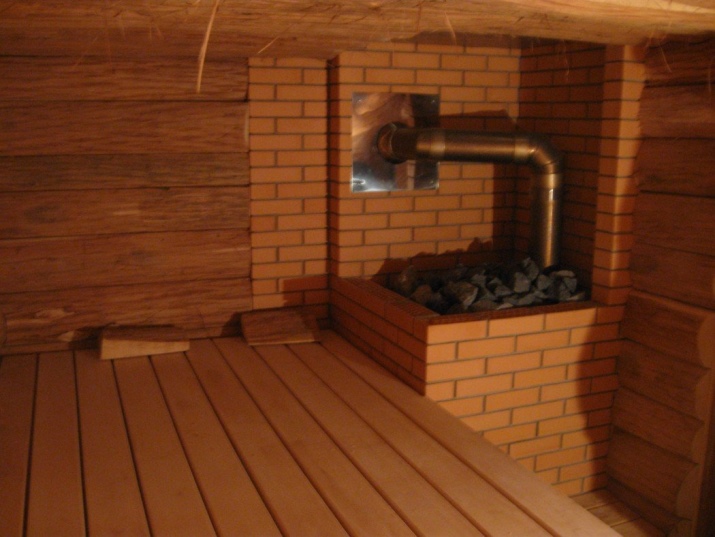
The side facing the room, usually covered with clinker oil - it enhances the natural color of the material, giving it a special depth and at the same time keeps it from dirt.
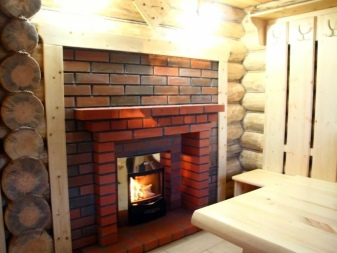
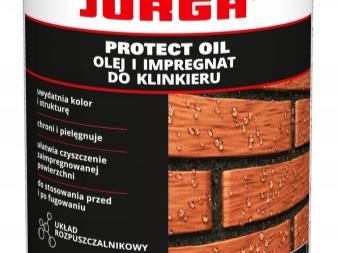
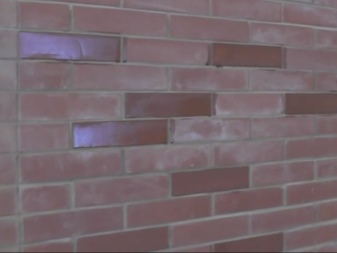
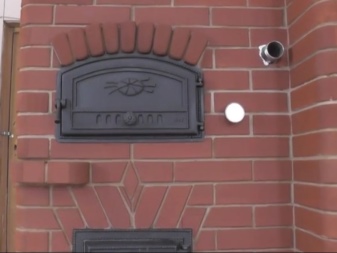
Very effective in baths look stone walls, which, of course, are an element of decor.
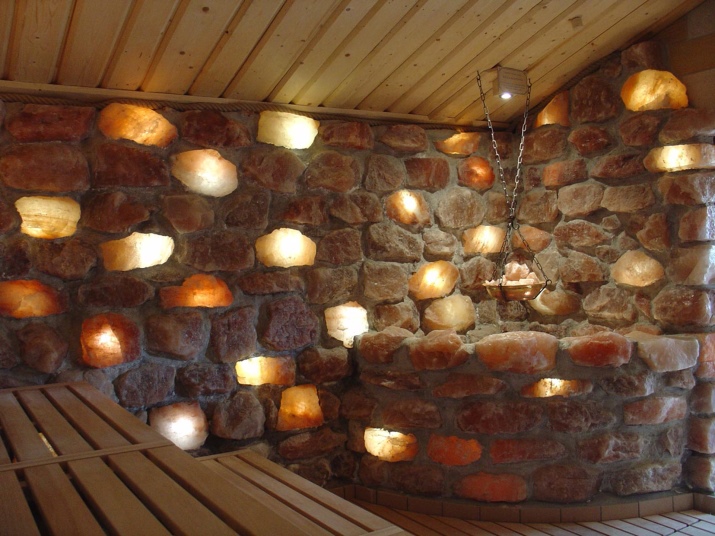
This can include both stone tiles, which do not require painting, and pebbles. In the second option, you can resort to staining, because unpolished stone looks colorless and dull - to highlight the shade, you can use silicone or acrylic varnish.
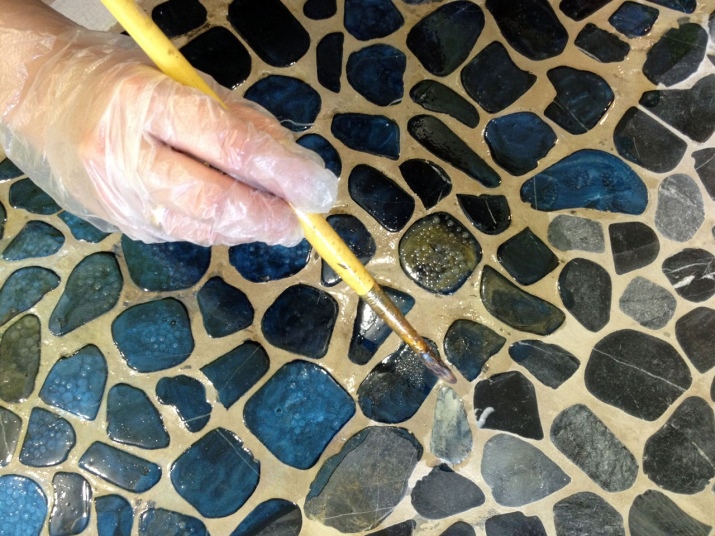
As you know, not only the bath needs to be painted, but also its furnace. Factory iron models usually come already painted. However, it is not uncommon for our homeowners to have homemade stoves made from any material at hand - most often corrosion-prone steel with varying concentrations of carbon is used. To protect such a stove from rust and thermal degradation, it must be painted with a heat-resistant mixture - silicone-organic enamel. Depending on its structure, it can be used in a variety of temperature ranges within 1000 degrees.
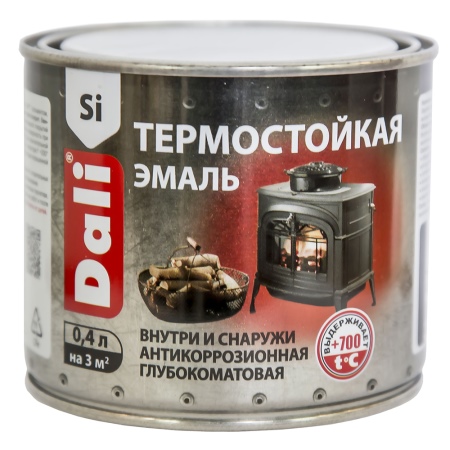
Materials for exterior finishing
For exterior finishing of the facades of the bath can take all types of paint products, which only can be found in stores - there is no prohibition, although there are certain reasonable restrictions. At the disposal of owners of the bath complex several categories of paints - it is oil, water-soluble mixtures, as well as enamels.
Enamels are base coats that give a smooth and very even surface. Technically, they are varnishes with coloring pigments that provide a matte finish. Enamels are made of alkyd varnishes in different variations, e.g. alkyd oil, alkyd melamine, as well as glyphthalic and pentaphthalic.
In any case, these are flammable and highly toxic compounds, which is why their use is allowed only when painting the bath outside.


Oil paints have been very popular for many decades, their base is a natural oliveusually made from heat-treated linseed oil. The popularity of oil paints is due to their affordability as well as their democratic cost.
However, we should not forget that they are highly flammable.
In addition, the chemical solvents used with them can have a negative impact on human health.

Water-soluble compositions for painting the bath are used less frequently. They can have different types of bases, most often silicone and acrylic resins. In addition, they add composites, such as polyurethane, so that after polymerization, the composition is no longer water soluble.

Varnishes are commonly used for staining wooden baths because unlike enamels and paints they give a transparent coating, the colors can be varied as the owner wishes - such a treatment does not block the natural texture of wood. Varnish is a synthetic polymer or resin, initially it has a liquid structure due to solvents, but they quickly enough weathered, and the resin begins to harden.


Review of brands
When choosing varnishes, enamels and paints for staining baths and saunas, you need to give preference to specialized lines, since the creators of such means take into account all the technical features and characteristics of wet rooms. The absolute market leader in this segment is the Finnish company Tikkurila. Among the most popular compositions of this manufacturer are the following.
- Supi Saunasuoja - The high-quality impregnation for internal coatings on the basis of water solution with acrylic. Can be used in rooms where the temperature exceeds 100 degrees. Available in a tintable state.
- Supi Laudesuoja - Oil-based enamel used for tinting sauna benches.
- Supi Saunavaha - The lacquer is considered a universal product designed for any type of bathing surfaces.

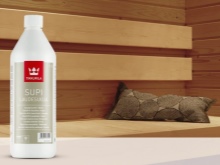

Users note that imported compositions are very effective, especially when it comes to Finnish manufacturers. They have only one drawback - a high price. That is why some owners of baths give preference to Russian manufacturers who offer cheaper ranges. Here are a few brands that are in demand when staining bath rooms.
- "Senezh Sauna. - Acrylate antiseptic used to protect wood paneling in baths. Includes a fungicidal component and has no chemical odor.
- Neomid 200 - Effective dyeing agent that includes antiseptic components. The composition is in demand for the treatment of shelves, benches and other wood coatings in saunas and baths.
- Neomid Sauna - Translucent acrylic-based varnish is used for impregnation of wooden battens in the steam room and other rooms with high humidity.



We choose the paint
By type of room
The most problematic room in the bath - it is a steam room. Many believe that there is absolutely nothing to paint, but the price for such a choice is often the rapid blackening of wood, its rotting, as well as the emergence of colonies of mold and fungus. The situation is not saved by drying, because it often leads to cracking of the surface of the tree - especially this often happens with lime and pine.

On the one hand, the lack of a protective paint coating can be called an environmentally friendly solution. But on the other hand, it will lead to the need for frequent refinishing of the coatings and can be very costly. Experts suggest a compromise - the use of safe impregnations on a wax or oil basis, they save the wood and do not allow liquids and dirt to penetrate into its fibers. You can paint the steam room with paints and varnishes, but only water-soluble.


Acrylic and silicone products will also work in the washroom. - In a word, all compositions that do not deteriorate and do not lose their characteristics upon contact with water. All other paints and enamels in conditions of high humidity very quickly begin to crack and peel off in pieces.
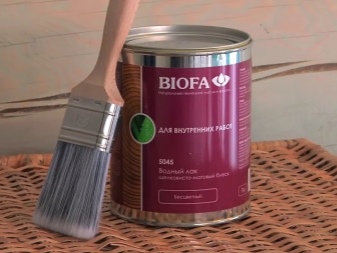
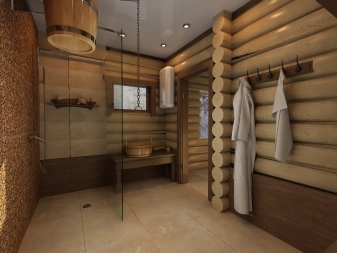
The pre-bath and rest area are less demanding on the structure of paint enamels. In this case, you can choose the composition based on your budget. If finances are not limited, it is better to give preference to water-soluble products, otherwise you can choose any paint from the cheap category, suitable in terms of matte finish and shade.
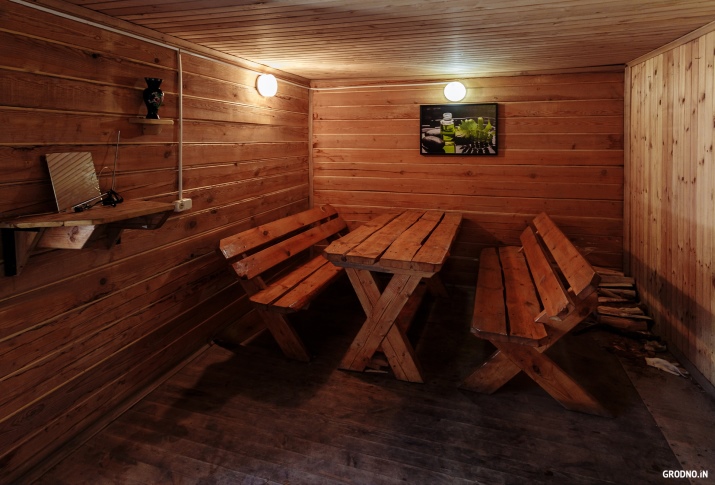
Important: when working, do not forget to use respiratory protection. And remember when choosing a composition that any alkyd paints and enamels are fire hazardous, but soluble compositions are not.
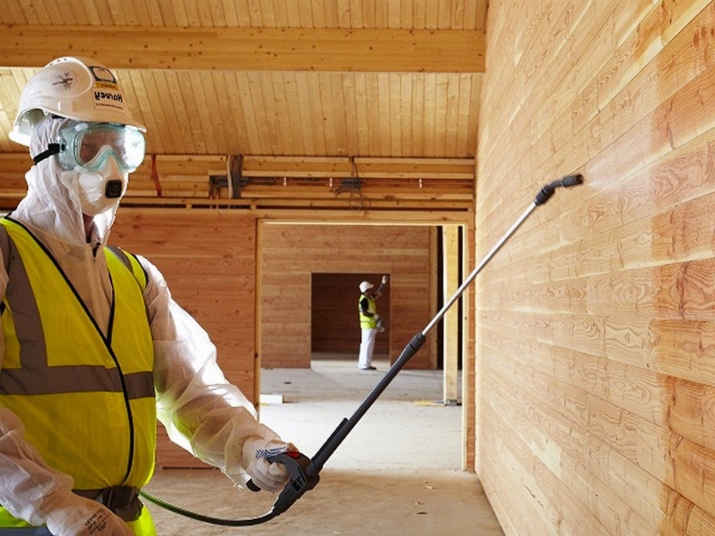
By type of surface and materials
Different parts of the sauna room, as well as different surfaces, need to use different means to paint them. Some are unpretentious - for example, the ceiling. There are no separate coatings for it, most often it is painted with the same composition that is bought to tint the walls. If the ceilings are made of wooden battens, they can be treated with any acrylic compound or varnish.

If you do not plan to preserve the texture and shade of the wood, you can buy any paint for the walls. However, remember that for wet areas is better to take means with a special marking, here are optimal acrylic or silicone compositions. In dry rooms, the ceiling can be processed by the most common water-based emulsion.
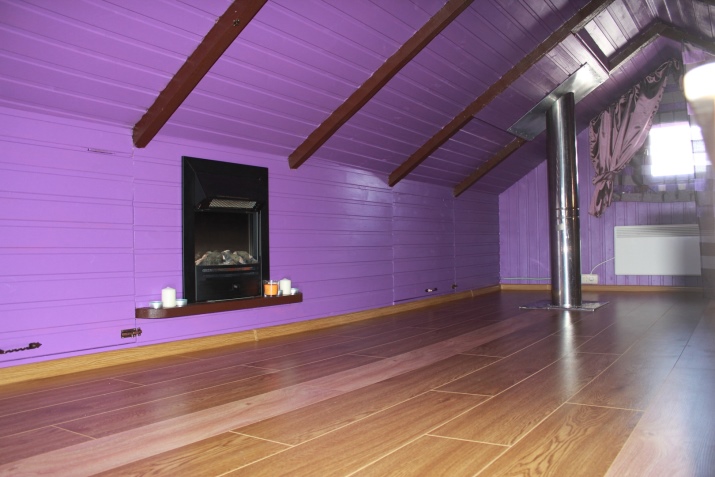
The floor in saunas can be wooden or concrete. The latter option is found mainly in damp rooms - it is not always covered with tiles. Such a surface can be painted with special products for concrete pools - this guarantees the material high adhesion and resistance to moisture.
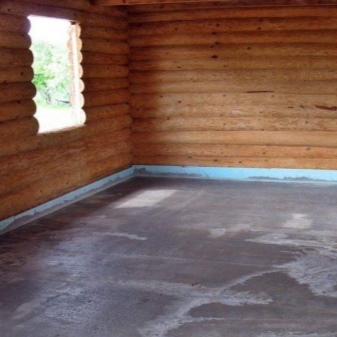

As for the wood floor, the choice is much wider - Here you can take a transparent enamel, varnish or opaque composition. If you intend to use the sauna frequently, it is worth buying a coating with special additives that increase its resistance to abrasion (urethane or polyurethane).
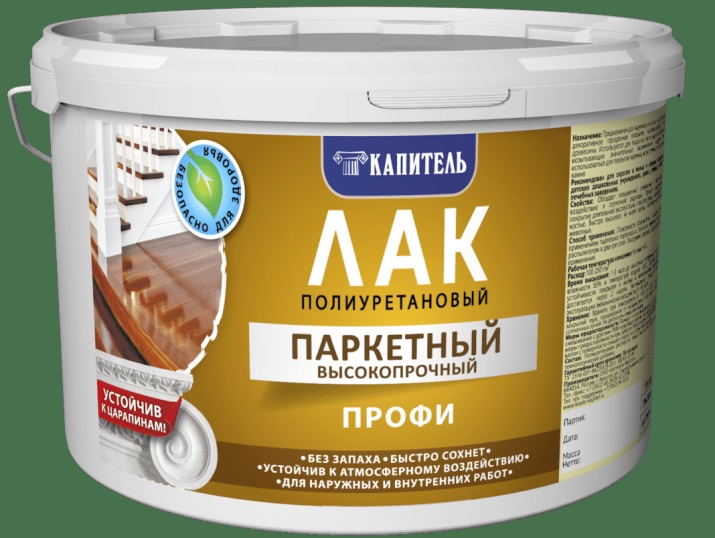
The floor is the coldest part, even in the steam room, so the choice of paints is almost unlimited, except only the humidity, which must be taken into account. You can always paint this surface with any paints and varnishes, including oil paints. Not a bad option will be and yacht varnishes that can withstand direct exposure to moisture.
For a sauna stove, it is better to choose in favor of heat-resistant enamels. Modern industry produces enamels in a variety of shades - black, brown, red, yellow and others. Brick furnaces, tanks and boilers are either painted with organosilicon enamel or whitewashed with chalk and lime.
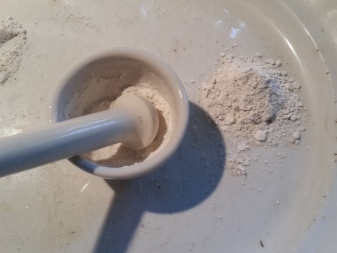
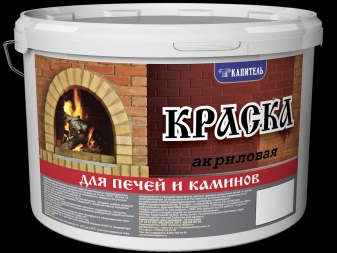
You can see more about painting and treating the inside of the bathhouse in the following video.




